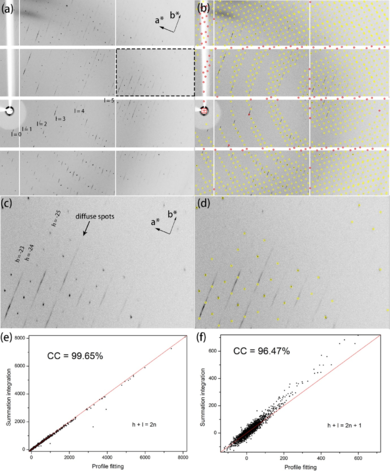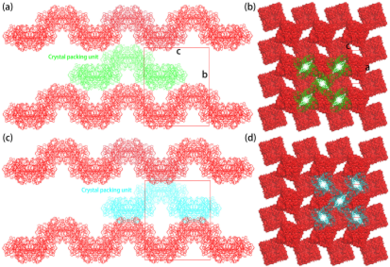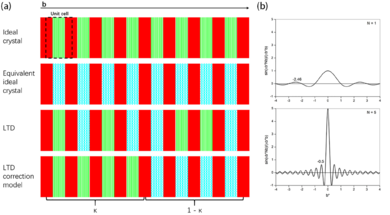Journal:Acta Cryst D:S2059798320011869
From Proteopedia
(Difference between revisions)

| Line 15: | Line 15: | ||
[[Image:Figure5bb.png|thumb|390px|left|'''Figure 5''' Pentamer of tetramer stacking in the toad NA crystal. (a, b) Side view of two alternative ways of stacking in the middle layer with a translation of (1/2, 0, 1/2). (c, d) Top view of (a, b).]] | [[Image:Figure5bb.png|thumb|390px|left|'''Figure 5''' Pentamer of tetramer stacking in the toad NA crystal. (a, b) Side view of two alternative ways of stacking in the middle layer with a translation of (1/2, 0, 1/2). (c, d) Top view of (a, b).]] | ||
{{Clear}} | {{Clear}} | ||
| + | |||
| + | *<scene name='86/860390/Cv/33'>Pentamer of tetramer stacking in the toad NA crystal. Fig. 5a</scene>. | ||
| + | *<scene name='86/860390/Cv/34'>Pentamer of tetramer stacking in the toad NA crystal. Fig. 5b</scene>. | ||
| + | *<scene name='86/860390/Cv/31'>Pentamer of tetramer stacking in the toad NA crystal. Side view of two alternative ways of stacking in the middle layer with a translation of (1/2, 0, 1/2)</scene>. | ||
| + | *<scene name='86/860390/Cv/32'>Pentamer of tetramer stacking in the toad NA crystal. Top view of two alternative ways of stacking in the middle layer with a translation of (1/2, 0, 1/2)</scene>. | ||
This randomness breaks the long-term periodic and forms a local short-term periodic. This appears to be the particle-size broadening (Coppens, 1997)<ref name="Coppens">PMID:25727874</ref>. If the long-term periodic is broken, the diffraction intensity would spread along the reciprocal-space direction of the step function. In this special case, it is the b* direction. With the spread of the reflections, the subsidiary maxima of the neighboring reflections may overlap, which will result in the smear spots, the especial chacteracters of LTD. | This randomness breaks the long-term periodic and forms a local short-term periodic. This appears to be the particle-size broadening (Coppens, 1997)<ref name="Coppens">PMID:25727874</ref>. If the long-term periodic is broken, the diffraction intensity would spread along the reciprocal-space direction of the step function. In this special case, it is the b* direction. With the spread of the reflections, the subsidiary maxima of the neighboring reflections may overlap, which will result in the smear spots, the especial chacteracters of LTD. | ||
| Line 21: | Line 26: | ||
[[Image:Figure_6.png|thumb|390px|left|'''Figure 6''' A lattice-translocation defect model. (a) The lattice has a layer structure with layers (parallel to the ac plane) stacked along the b direction. (b) The particle-size broadening introduced by the finite unit-cell translations.]] | [[Image:Figure_6.png|thumb|390px|left|'''Figure 6''' A lattice-translocation defect model. (a) The lattice has a layer structure with layers (parallel to the ac plane) stacked along the b direction. (b) The particle-size broadening introduced by the finite unit-cell translations.]] | ||
{{Clear}} | {{Clear}} | ||
| - | <scene name='86/860390/Cv/30'>Test</scene> | ||
<b>References</b><br> | <b>References</b><br> | ||
Revision as of 13:19, 24 September 2020
| |||||||||||
This page complements a publication in scientific journals and is one of the Proteopedia's Interactive 3D Complement pages. For aditional details please see I3DC.



